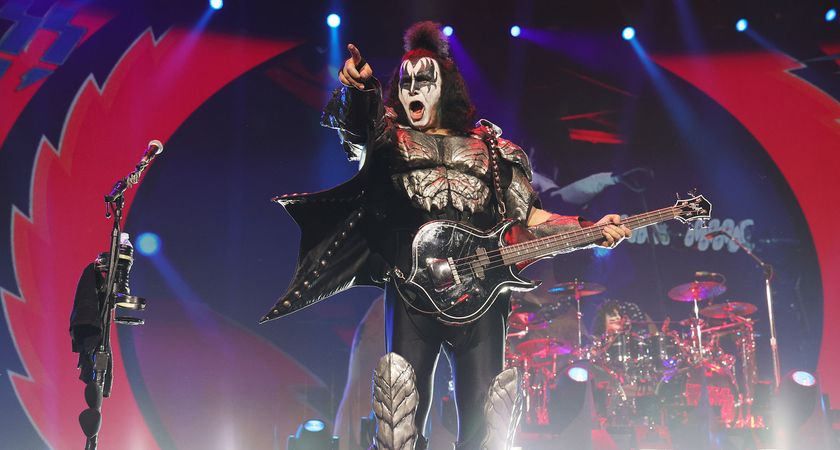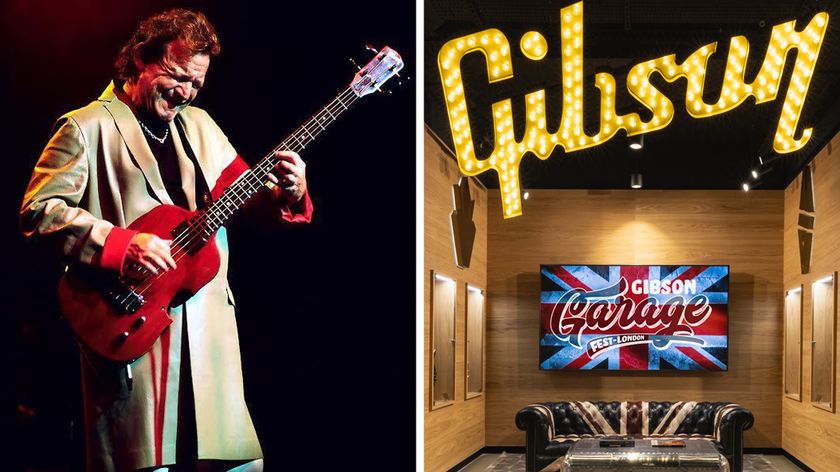The history of the Fender Bass VI
Find out more about Fender's third bass model

Fender Bass VI

Fender Bass VI

Fender Bass VI

Fender Bass VI

Fender Bass VI

Fender Bass VI

Fender Bass VI

Fender Bass VI
Having already produced the fantastic Precision and Jazz basses, Fender's third bass model was actually something of a shock. In 1961, hot on the tails of the Jazz Bass, the Bass VI was released but it certainly wasn't aimed at the bass market; it was built to steal some of Danelectro's UB-2 action, which until now was the only 6-string bass in existence.
With a 30-inch scale length, (short by bass standards), three pickups and a tremolo arm, this was definitely a lead instrument and having the ability to access all three pickups individually, it was something of a forerunner of the Fender Jaguar, both in looks and general appointments.
Its design actually borrowed heavily from the Jazzmaster adopting both the body and headstock shapes as well as the floating tremolo system that included Trem-Lock for a more stable hardtail playing experience and easier string changing.
The neck featured a rosewood fingerboard with dot inlays and the earliest models had just Fender VI on the headstock but quickly 'ELECTRIC BASS GUITAR' was added to the decal. This first version featured three Strat-style, single-coil pickups mounted within purpose-built oblong chrome plated metal surrounds and each had a designated slider switch to turn them on and off.
These switches were mounted on a flush fitted chrome plate within the scratchplate and in keeping, the Volume and Tone controls were mounted on a separate chromed bell plate which also housed the jack socket. Sunburst was the basic finish but custom colours with matching headstocks were also on offer but like many of its predecessors, the first version of the Bass VI was not going to remain in production for long.
The Jaguar effect
Following the release of the Jaguar, Fender began modifying the Bass VI giving it Jaguar-style pickups with their distinctive saw-tooth surround plus a string damping mechanism that was part of the bridge assembly. Whilst the Jaguar retained the triple switch panel, for the Bass VI a fourth slider switch was added to the plate.
This provided low cut but it soon became known as the 'strangle' switch due to the somewhat drastic response it produced. At the same time a maple fingerboard with black dots was offered as an alternative but it can't have been that popular as these have become very rare.
Get the MusicRadar Newsletter
Want all the hottest music and gear news, reviews, deals, features and more, direct to your inbox? Sign up here.
The neck had another revision in 1965 when it became bound then block inlays became standard. In 1968 the gold Fender decal on the headstock was replaced with a black one and the nitrocellulose finish was changed to polyester.
Sound-wise it's a rather curious beast, particularly when fitted with the original flatwound strings as per delivery spec. Like any three pickup guitar as you work from one unit to the other you obviously get an increase or decrease in top end attack and as good as these individual sounds are, it's the pickup combinations that produce some really excellent scooped hollow sounds.
It sounds good when strummed too but standard chords take on a completely different dynamic, as the harmonic overtones are strangely different to a regular guitar. Even two string chords sound full so it really does have a unique sound.
Star players
The Bass VI created interest in the States with players like Rick Danko and Randy Bachman, whilst in the UK we became aware of the Bass VI thanks to Jet Harris. He was the first player over here to champion this new instrument and used it on his first two solo singles, Besame Mucho and Main Title Theme.
The bass itself had actually been ordered from Fender by lead guitarist Big Jim Sullivan of The Wildcats in 1962 but as Jet had recently left the Shadows he needed a new sound to help launch his solo career. Jim generously suggested he try the Bass VI and handed it over.
Jet took to it immediately and it suited the moody image he'd created whilst in the band and was the perfect way to redefine The Shadows' bass player as a lead instrumentalist. Jet owned several Bass VI's over the years, the last one being a Fiesta Red with matching headstock like the one featured here. For the sake of keeping the records straight Jet did not use a Bass VI on his big hit Diamonds with Tony Meehan, that was actually a D-tuned Fender Jaguar.
Tuned an octave below a regular guitar, the Bass VI sat right in the bass guitar range so it was inevitable that bass players would want to give it a try. One the first players in Britain to use it thus was Jack Bruce during his time with Manfred Mann and of course with Cream.
Jack had an early one with three switches but finally stopped using it when the psychedelic oil paint job (that he and Eric Clapton had done to their guitars by The Fool), became sticky and virtually unplayable. Klaus Voorman also used one with Manfred Mann as did Eric Haydock, the original bass player with The Hollies.
Hank Marvin also dabbled with the Fender VI using one on the Shadows' Stingray single and the Thunderbirds Theme. Even The Beatles were in on the act with both John Lennon and George Harrison using one during the White Album and Abbey Road sessions. It was seen on their videos too including Hey Jude and Let It Be. Later players include Andy Pyle of Blodwyn Pig, Johnny Marr and Robert Smith of The Cure, who began using one for writing songs.
The modern age
After years of absence, in the mid-1990s Fender brought the Bass VI back into production in their Japanese facilities, where it gained an increase in scale length to 30.3-inches.
In spite of the new models lovingly recreating their predecessors, the demand for such an instrument will never be high and again they were phased out, although rumours abound that 2012 may see the appearance of yet another Bass VI reissue from Fender Japan. 2006 also saw a Fender Custom Shop recreation of the 1964 model complete with string mute!
The inspiration for this piece came from the magnificent Fiesta Red specimen that is currently on sale in Vintage And Rare Guitars here in Bath. We offer our hearty thanks to them for allowing us to spend a lot of time playing and drooling over this lovely instrument.
Check out a selection of detailed images of this glorious Fender Bass VI in our gallery.

“AI is about as close to reality as you can ever imagine”: Gene Simmons discusses the prospect of a virtual KISS and says the “future of entertainment is here”

“It meant a great deal to him and remains one of our most beloved of Jack’s treasures”: Cream legend Jack Bruce’s EB-1 violin bass to go on display at the Gibson Garage London
Most Popular









